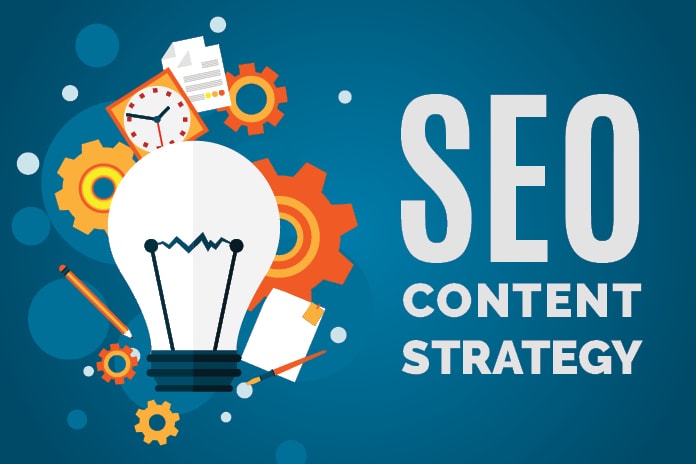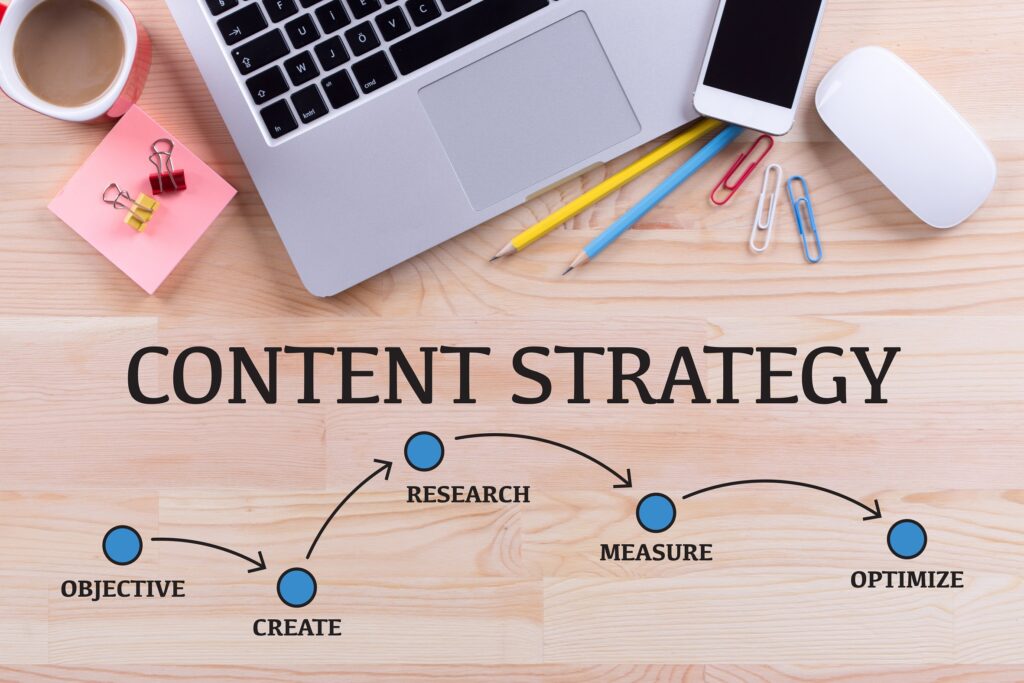Content strategy is an essential component of marketing strategy. It answers the questions of the audience’s who, what, where, when, and how. It provides a framework stating to measure return on investment regarding content marketing. It also maintains accountability, ensuring powerpack results.
For good content, two things are most essential: time and money. It does not depend on whether the blog is outsourced or made by yourself; it is very difficult to prepare and run a well-organized plan to get the desired outcome.


Content strategy vs. content marketing strategy
Content strategy is a high-level venture than a content marketing strategy. It provides a roadmap that helps to reach the desired content marketing. Powerful content strategy is the decision-making underlying content impact for success.
Content marketing is the process of helping to organize, schedule, create, publish, and promote content into pieces working as a tactic for a powerful content strategy.
Content strategy defines itself as
- Accomplishment
- The optimal position to reach
- Variety of content to publish
- Ways to support the brand
- Measures for separating the content
- Promoting and intensifying the content
- Success
All these points help to define a powerful content strategy. It is the baseline for the content marketing strategy. It helps to move in the right direction, whereas without a content strategy, it is a total waste of time and hence impact on the audience is not up to the mark.

SEO powerful content strategy tips are:
- Map content for the customer’s journey
- Align concerning search intent
- Launching of SEO clusters
- Atomizing content
- Developing online tools
Fifteen steps to developing powerful content strategies are:
- Establish goals
- Focusing on outcome
- Stretch goals vs. SMART goals
- Explaining audience segments and buyer persona
- Audience segments
- Data sources
- Audience insights
- Buyer persona
- Conduction of content audit and gap analysis
- Map content through the customer’s journey
- Targeting stages of the funnel
- Keyword research
- Brainstorming content ideas
- Choosing a content management system
- Establishing the content development process
- Implementation of the content calendar
- Quality is greater than quantity
- Long-form content
- Building expertise, authority, and trust (EAT)
- Evoking emotional response
- Planning of a variety of content types
- Defining content distribution and amplification strategy

We will discuss all the points in detail down below.
Establish goals
Most important is to establish crystal clear business goals and KPIs. It helps measure strategy, program success, or communicate ROI to the company stakeholders.
Focusing on outcome
Goals help compel action and drive the powerful content strategy to the outcomes no one has imagined. There is two structure that helps to gain outcomes.
Those are stretch goals and SMART goals.
Stretch goals are more of an aspirational type. They are designed for major quarterly or annual milestones to push your team to achieve more and become more ambitious.
SMART goals are specific, measurable, achievable, realistic, and time-constrained.

Explaining audience segments and buyer persona
Next time research our audience and create the persona to help gain a more precise and picture-perfect persona. It is the critical step in developing a powerful content strategy targetting the right audience.
Audience segments
Marketing strategy is more based on identifying the target audience to form strong connections. They can be subgrouped on any basis like education qualifications, income, age, etc.
Data sources
It is the location where the data is being originated from. There are many factors to segment our target audience and diversify them to connect.
Audience insights
It is designed to help find new audiences by showing valuable information regarding website visitors concerning app users.
Buyer persona
It is the representation of ideal customers stating its common audience attributes. Numerous factors include pain points, needs, demographic information, etc.
The main difference between buyer persona and audience segment is buyer persona thinks audience as individuals disregarding as a group.

Conduction of content audit and gap analysis
Audience audit helps to know about
- Competitor content gaps
- Customer interest content gaps
- Missing steps in the customer journey
- Irrelevant content
- Underperforming pages
Map content through the customer’s journey
The buyer’s funnel helps to know the target audience. It consists of
- Awareness
- Consideration
- Intent
- Purchase
- Retention
From up to down through the list, it goes from informational to transactional.
Targeting stages of the funnel
The blog can answer all the questions regarding audience doubts beforehand, so the content is proper for the audience. In targeting stages of the funnel helps to find answers concerning the target audience.

Keyword research
It is the foundation of an SEO-focused content strategy because it helps guide the most valuable topics by keeping them organized.
Brainstorming content ideas
Brainstorming helps to improve the content in numerous ways. Those are enlisted below:-
- Leverage proprietary data
- Visualize boring topics with graphics
- Simplify or break down a complex topic
- Combine related content into a comprehensive guide
- Use explainer videos within your copy
- Create something more entertaining
Choose a content management system.
CMS (Content Management System) helps create, organize, publish, and store content in different formats. There are ample options to choose from in the CMS.

Establish a content development process
Content needs to be clearly defined, repeatable, and structured content strategy with the development process. It helps to create high-quality and high-value content.
There is a process including:-
- Keyword research
- Title
- Content brief
- Draft
- Edit
- Revisions
- Media selections
- Layout
- Optimization
- Browser preview
- Publish
- QA
Implement a content calendar
It helps to organize in a structural format that aligns your content team with tactics and goals in the marketing sector. I use SMART goals to track the performance.
Prioritize quality over quantity
There are various reasons why quality is over quantity. Those points to ponder are:-
- Won’t waste resources on thin content
- Focus on actionable content that drives traffic and leads
- Stakeholders will see industry experts that earn media mentors with natural backlinks
- Keep visitors on your site for a longer duration
- Increase brand affinity
Publish long-form content
According to the study by Semrush, longer-form content generates 3x more traffic, 4x shares, and 3.5x more backlinks. For this to happen, there is various reason like more keywords and hence top search in the google search and more engagement.
Build expertise, authority, and trust
The principles foundation of google search is expertise, authority, and trust. Many more factors within google’s algorithm are meant to measure. It also indirectly benefits SEO programs.
Evoke an emotional response
By using emotional response, it contains to be more engaging, making more audience perfect also. There is a scientific reason for this statement.
The human brain subconsciously processes 11 million bits of information of sensory information each second. Compare that to only 40 bits per second on a conscious level. Harvard professor Gerald Zaltman estimates that 95% of decisions are made subconsciously.

Plan a variety of content types
There is a format of powerful content strategy are:-
- Blog post
- Article
- Whitepaper
- Ebook
- Guide
- Case study
- Interview
- Checklist
- Template
- News topic clusters
- Infographic
- Data visualization
- Survey
- Presentation
- Video
- Podcast
- Demo
- Tools

Define your content distribution and amplification strategy
Content distribution is a powerful way that increases website traffics. By building amplification into a powerful content strategy process, several posts acrosses numerous social platforms promote business to a larger scale.
Conclusion
Powerful content strategy ideas have been provided by detailed research and reviews. This article will help you to guide through any difficulties in the field of content strategy and marketing. With the help of a powerful content strategy, content marketing is made, and vice-versa is not true. Hence, the position of a powerful content strategy is more than content marketing.




